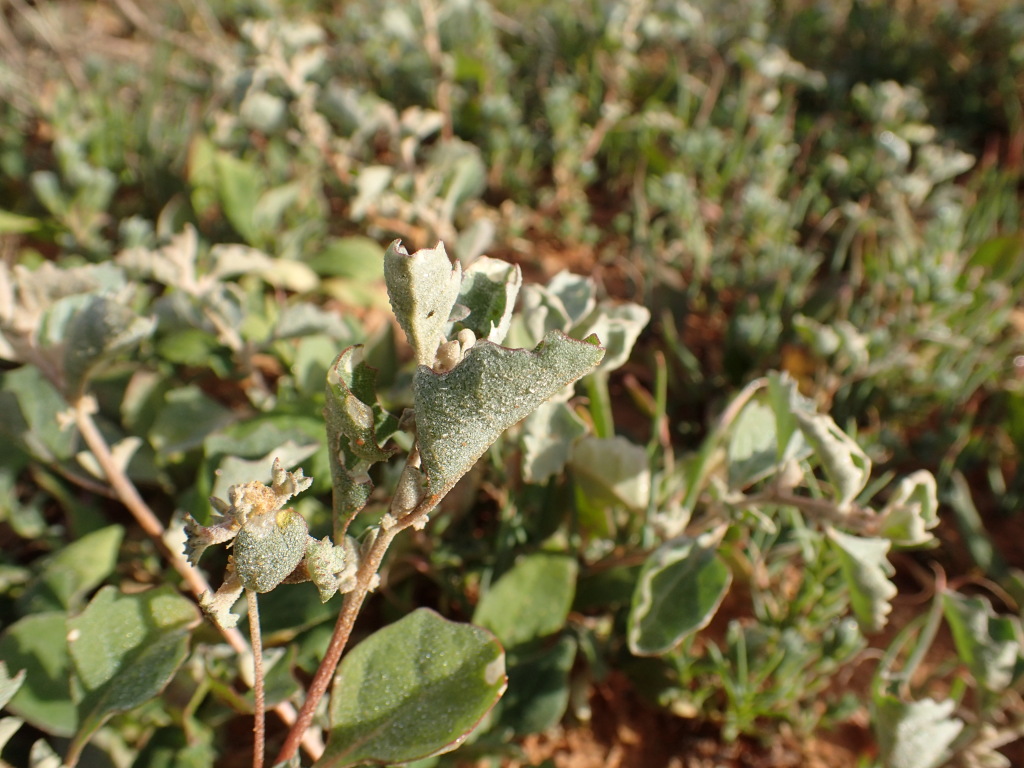Atriplex limbata
Benth.Procumbent, usually deeply taprooted perennial, to c. 30 cm high, monoecious. Leaves shortly petiolate to subsessile, ovate to obovate, 10–30 mm long, 6–18 mm wide, entire to shallowly lobed, mealy or glistening grey-green on both surfaces. Male flowers in small axillary clusters or in short interrupted spikes, female flowers clustered in lower axils. Fruiting bracteoles fused and cylindric for the greater part, flattened and broadly fan- or crescent-shaped at the apex, each face with a claw-like appendage usually exceeding the valves, 6–12 mm long, 4–6 mm wide overall, the tubular portion 4–8 mm long, 1–2 mm wide. Fruits Sep.-Feb.
MuM, MSB, RobP. Also WA, NT, SA, Qld, NSW. In Victoria confined to the extreme north-west, and known by only a few collections from near Red Cliffs, Mildura, Neds Corner Station and Lake Wallawalla and Lake Culluleraine.
Walsh, N.G. (1996). Chenopodiaceae. In: Walsh, N.G.; Entwisle, T.J., Flora of Victoria Vol. 3, Dicotyledons Winteraceae to Myrtaceae, pp. 129–199. Inkata Press, Melbourne.
 Spinning
Spinning



